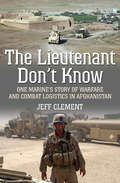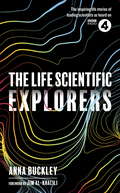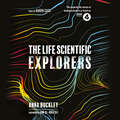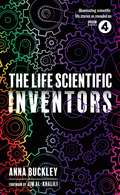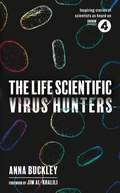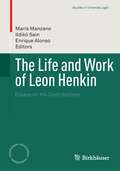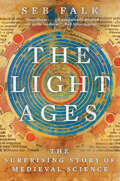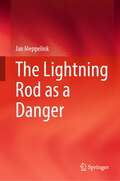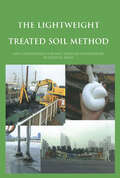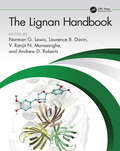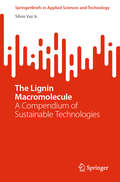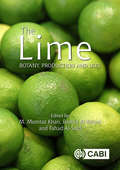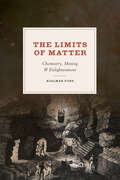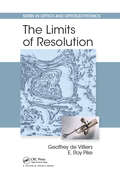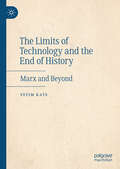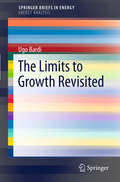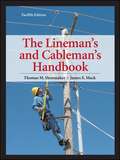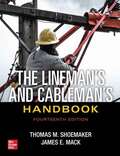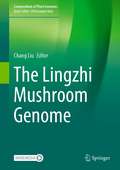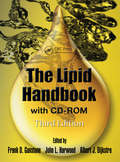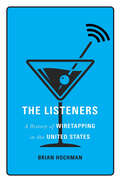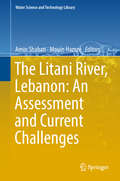- Table View
- List View
The Lieutenant Don't Know: One Marine's Story of Warfare and Combat Logistics in Afghanistan
by Jeffrey Clement“A unique insight into the war experience . . . a realistic picture of what it is like to serve in Afghanistan as a Marine combat logistician” (Small Wars Journal).When he joined the Marines, Jeff Clement was not a high-speed, top-secret recon guy. A logistician instead, he led combat convoys across treacherous terrain in southern Afghanistan through frequent enemy attacks in order to resupply US and British positions. As such, he and his vehicles were a constant target for the resistance, and each movement was a travail, often accompanied by thundering blasts as the insurgents paved their way with IEDs. Every step forward was fraught with danger, even as each objective had to be met. As a Marine Corps lieutenant, he deployed to Afghanistan twice and always found a learning curve, as men previously on the ground were more savvy, and the insurgents, there for the duration, were savvier still.The Lieutenant Don’t Know provides a refreshing look at the nitty-gritty of what our troops have been dealing with in Afghanistan—from the perspective of a young officer who was perfectly willing to learn and take responsibility for his units in a confusing war where combat was not merely on the “front,” but all around and looking over all their roads.“Finally, a readable, honest and gritty account of the dangerous, exhausting labor that keeps ‘The Green Machine’ going.” —Bing West, New York Times–bestselling author of One Million Steps“One of the best war memoirs I’ve ever read . . . a moving, inspiring work, that’s enjoyable as hell, as well.” —Stan R. Mitchell, author of Gravel Road
The Life Scientific: Explorers
by Anna BuckleyInspiring life stories from BBC Radio 4's hit series The Life Scientific'In showing non-scientists why science offers so many paths to discovery it has no equal' Gillian Reynolds, TelegraphBased on Jim Al-Khalili's ground-breaking interviews, The Life Scientific: Explorers takes science out of its box and introduces us to the men and women who make it happen.The explorers featured in this volume include: Michele Dougherty, the mathematician who persuaded the Cassini mission to Saturn to make a diversion; Richard Fortey on his love of trilobites; Monica Grady, Meteorite Lady; neurosurgeon Henry Marsh on slicing through our thoughts; the Director of the British Antarctic Survey, Jane Francis; Jocelyn Bell Burnell describing how she missed out on a Nobel Prize; Brian Cox on quantum mechanics; and Nobel Prize winner John Sulston on why he thought it would be a good idea to sequence the human genome.
The Life Scientific: Explorers
by Anna BuckleyInspiring life stories from BBC Radio 4's hit series The Life Scientific'In showing non-scientists why science offers so many paths to discovery it has no equal' Gillian Reynolds, TelegraphBased on Jim Al-Khalili's ground-breaking interviews, The Life Scientific: Explorers takes science out of its box and introduces us to the men and women who make it happen.The explorers featured in this volume include: Michele Dougherty, the mathematician who persuaded the Cassini mission to Saturn to make a diversion; Richard Fortey on his love of trilobites; Monica Grady, Meteorite Lady; neurosurgeon Henry Marsh on slicing through our thoughts; the Director of the British Antarctic Survey, Jane Francis; Jocelyn Bell Burnell describing how she missed out on a Nobel Prize; Brian Cox on quantum mechanics; and Nobel Prize winner John Sulston on why he thought it would be a good idea to sequence the human genome.
The Life Scientific: Explorers
by Anna BuckleyInspiring life stories from BBC Radio 4's hit series The Life Scientific'In showing non-scientists why science offers so many paths to discovery it has no equal' Gillian Reynolds, TelegraphBased on Jim Al-Khalili's ground-breaking interviews, The Life Scientific: Explorers takes science out of its box and introduces us to the men and women who make it happen.The explorers featured in this volume include: Michele Dougherty, the mathematician who persuaded the Cassini mission to Saturn to make a diversion; Richard Fortey on his love of trilobites; Monica Grady, Meteorite Lady; neurosurgeon Henry Marsh on slicing through our thoughts; the Director of the British Antarctic Survey, Jane Francis; Jocelyn Bell Burnell describing how she missed out on a Nobel Prize; Brian Cox on quantum mechanics; and Nobel Prize winner John Sulston on why he thought it would be a good idea to sequence the human genome.
The Life Scientific: Inventors
by Anna BuckleyWhat does it take to be an inventor? Judging by the ingenious individuals who have come into The Life Scientific studio in the last eight years, there is no simple answer. Mathematicians, electricians, molecular biologists and mechanics can all transform lives. Some think with their hands, others make things in their minds. Most have a vision of the future. All are driven by a passionate determination to solve problems.These intimate accounts, based on interviews recorded for the popular BBC Radio 4 programme The Life Scientific, chart the life journeys of scientists and engineers working in Britain today from childhood interests to innovation. Explaining what they did when and why, they make science seem straightforward and exciting, revealing moments of disappointment, creativity, frustration and joy. The result is an illuminating collection of biographical short stories that make scientists and the work they do accessible to us all.
The Life Scientific: Inventors
by Anna BuckleyWhat does it take to be an inventor?Judging by the ingenious individuals who have come into The Life Scientific studio in the last eight years, there is no simple answer. Mathematicians, electricians, molecular biologists and mechanics can all transform lives. Some think with their hands, others make things in their minds. Most have a vision of the future. All are driven by a passionate determination to solve problems.These intimate accounts, based on interviews recorded for the popular BBC Radio 4 programme The Life Scientific, chart the life journeys of scientists and engineers working in Britain today from childhood interests to innovation. Explaining what they did when and why, they make science seem straightforward and exciting, revealing moments of disappointment, creativity, frustration and joy. The result is an illuminating collection of biographical short stories that make scientists and the work they do accessible to us all.
The Life Scientific: Virus Hunters
by Anna BuckleyBBC Radio 4's celebrated THE LIFE SCIENTIFIC has featured some of the world's most renowned experts in the field of deadly viruses. The interviews make sobering reading, a reminder of all the deadly viruses that have threatened global health, and why for the scientists working on the front line in the war against viruses, the arrival of Covid-19 came as no surprise. Among the contributors to this all-too-timely book are:Jeremy Farrar, before he became Director of the Wellcome Trust, worked in an Infectious Diseases Hospital in Vietnam. He was on the frontline tackling SARS and nine months later a highly pathogenic strain of bird flu, H5N1. Peter Piot was at the forefront of the Ebola epidemic in West Africa. He was the first to identify HIV in Africa. It took him fifteen years to persuade the world that it was also a heterosexual disease. Later as Executive Director of UN AIDS he fought for years to get the UN to take the threat of HIV seriously.Jonathan Ball studies how viruses operate at the molecular level, hoping to find their Achilles' heel and so develop effective vaccines. During the West Africa Ebola epidemic, he studied how the genome of the Ebola virus evolved as it spread from Guinea to Liberia and Sierra Leone. He has shown that as this virus (which more happily lives in bats) infects more humans, it becomes ever more infectious.Wendy Barclay seeks to understand how viruses are able to jump from animals to humans and why some viruses are so much more dangerous to humans than others. Most Londoners had no idea they were infected during the Swine Flu pandemic of 2009. The Bird Flu epidemic in Asia claimed thousands of livesKate Jones is a bat specialist who works on how ecological changes and human behaviour accelerate the spread of animal viruses into humans. Bats have been infected with coronaviruses for more than 10,000 years.
The Life and Work of Leon Henkin
by María Manzano Ildikó Sain Enrique AlonsoThis is a comprehensive book on the life and works of Leon Henkin (1921-2006), an extraordinary scientist and excellent teacher whose writings became influential right from the beginning of his career with his doctoral thesis on "The completeness of formal systems" under the direction of Alonzo Church. Upon the invitation of Alfred Tarski, Henkin joined the Group in Logic and the Methodology of Science in the Department of Mathematics at the University of California Berkeley in 1953. He stayed with the group until his retirement in 1991. This edited volume includes both foundational material and a logic perspective. Algebraic logic, model theory, type theory, completeness theorems, philosophical and foundational studies are among the topics covered, as well as mathematical education. The work discusses Henkin's intellectual development, his relation to his predecessors and contemporaries and his impact on the recent development of mathematical logic. It offers a valuable reference work for researchers and students in the fields of philosophy, mathematics and computer science.
The Life of Isaac Newton
by Richard S. WestfallIsaac Newton was indisputably one of the greatest scientists in history. His achievements in mathematics and physics marked the culmination of the movement that brought modern science into being. Richard Westfall's biography captures in engaging detail both his private life and scientific career, presenting a complex picture of Newton the man, and as scientist, philosopher, theologian, alchemist and public figure, President of the Royal Society and Warden of the Royal Mint. An abridged version of his magisterial study Never at Rest, this concise biography is now published for the first time in paperback and makes Westfall's highly acclaimed portrait of Newton newly accessible to general readers.
The Light Ages: The Surprising Story Of Medieval Science
by Seb FalkAn illuminating guide to the scientific and technological achievements of the Middle Ages through the life of a crusading astronomer-monk. Soaring Gothic cathedrals, violent crusades, the Black Death: these are the dramatic forces that shaped the medieval era. But the so-called Dark Ages also gave us the first universities, eyeglasses, and mechanical clocks. As medieval thinkers sought to understand the world around them, from the passing of the seasons to the stars in the sky, they came to develop a vibrant scientific culture. In The Light Ages, Cambridge science historian Seb Falk takes us on a tour of medieval science through the eyes of one fourteenth-century monk, John of Westwyk. Born in a rural manor, educated in England’s grandest monastery, and then exiled to a clifftop priory, Westwyk was an intrepid crusader, inventor, and astrologer. From multiplying Roman numerals to navigating by the stars, curing disease, and telling time with an ancient astrolabe, we learn emerging science alongside Westwyk and travel with him through the length and breadth of England and beyond its shores. On our way, we encounter a remarkable cast of characters: the clock-building English abbot with leprosy, the French craftsman-turned-spy, and the Persian polymath who founded the world’s most advanced observatory. The Light Ages offers a gripping story of the struggles and successes of an ordinary man in a precarious world and conjures a vivid picture of medieval life as we have never seen it before. An enlightening history that argues that these times weren’t so dark after all, The Light Ages shows how medieval ideas continue to color how we see the world today.
The Lightning Rod as a Danger
by Jan MeppelinkThis book investigates the physical effects of a lightning flash on a person near the down conductor of a lightning protection system. These effects are the touch voltage, the step voltage and the side flash. For this purpose, a full-scale simulation model of the human body with a resistance of 1000 ohms was first created. In the simulation model, the body can touch the down conductor or be placed close to it. Furthermore, the specific resistance of the earth is varied. Likewise, insulating layers such as asphalt can be incorporated into the simulation model. Also, special cases like water permeable layers or water layers on an asphalt layer can be calculated. In post-processing, all relevant values can be determined, such as the energy converted in the body, the charge, the current and the voltage applied to the body. A comparison with the permissible limit values then shows for the lightning protection classes whether there is danger or not and provides information on necessary measures. There is a risk for death and injury if the down conductor is touched. However, there is also a risk of a side flash if a person is standing next to a discharge. Site isolation with dry asphalt is effective, but there is a residual risk of surface discharges. In real situations with wet asphalt, water-permeable layers or asphalt with a water layer, however, there is a great risk of death or injury. Equipotential bonding with an earthing grid is a necessary but not sufficient solution with regard to the induced voltage at negative subsequent stroke. Therefore, the situation must always be examined on a case-by-case basis with regard to the safety requirements. The only effective measure to prevent injury and death due to touch voltage is an insulating down conductor in conjunction with equipotential bonding. The measures for reducing the touch voltage, such as site insulation and equipotential bonding, basically also apply to limiting the step voltage. A risk calculation according to IEC 62305-2 gives the mean time between two events of injury and death MG = 1/RA. The tolerable risk is: RA = 0,0001 or MT = 10.000 years, equivalent to one death in 10.000 years.
The Lightweight Treated Soil Method: New Geomaterials for Soft Ground Engineering in Coastal Areas
by Takashi Tsuchida Kazuhiko EgashiraThis is an in-depth practical examination of the newly developed Lightweight Treated Soil Method, based on the extensive research and experience of two leading recognized experts. Indispensable to geotechnical and construction engineers or to researchers and professionals interested in coastal engineering techniques, geotechnical engineering or geo
The Lignan Handbook
by Norman G. Lewis Laurence B. Davin V. Ranjit N. Munasinghe Andrew D. RobertsLignans are aromatic compounds isolated from plants. This handbook presents an authoritative and comprehensive review of lignan chemistry, biochemistry, nomenclature, uses, and occurrence. Lignans are used in a wide variety of industries and this book will appeal to those working in the pulp and paper industries, renewable energy, specialty chemicals, pharmaceuticals, flavors and fragrances, agriculture and forestry, evolution and ecology. Additionally, the book features a comprehensive lignans dictionary section, drawn from the prestigious Dictionary of Natural Products. Other features include: Presents a comprehensive and up-to-date account of this important group of natural products Addresses and resolves problems in current lignan nomenclature Edited by the leaders in the field of lignan chemistry and biochemistry
The Lignin Macromolecule: A Compendium of Sustainable Technologies (SpringerBriefs in Applied Sciences and Technology)
by Silvio Vaz Jr.This book covers lignin, a renewable source of carbonaceous material derived from biomass, which is a subject of research, development and innovation in both academia and industry. From lignin we can obtain chemicals (e.g., aromatics, phenols), materials (e.g., fibres, engineered plastics, modified polymers), specialties (e.g., additives as antioxidant), among other products in diverse levels of technology readiness. However, there are challenges to overcome in terms of chemical structure, industrial yields of conversion processes, and the quality of raw material in order to reach the best uses and applications according to the sustainability vision for products and processes. This book deals with the main biochemical pathways of synthesis; advanced analytical techniques; extraction strategies; chemical, biochemical, biological, and physical processing for chemicals and materials; circularity and sustainability aspects for actual and future production chains, allied to life cycle assessment and industrial ecology.
The Lime
by M. Mumtaz Khan Rashid Al-Yahyai Fahad Al-SaidThis book is a comprehensive and up-to-date resource covering the botany, production and uses of limes. The lime is an important fruit crop throughout citrus producing regions of the world, with its own specific benefits, culture and marketplace, but producers face issues affecting successful cultivation and production. The Lime: Botany, Production and Uses contains detailed information on: #65533; Breeding, genetics and biodiversity of limes #65533; Orchard establishment, management and precision agriculture #65533; Pests and diseases, including the latest knowledge regarding current threats such as Witches' Broom Disease and Citrus Greening #65533; Harvesting and postharvest management #65533; Traditional and commercial uses of limes Authored by an international team of experts and presented in full colour throughout, this book is an essential resource for academic researchers and specialist extension workers, in addition to growers and producers involved in the citrus industry.
The Limits of Matter: Chemistry, Mining, and Enlightenment
by Hjalmar ForsBy studying the chemists at the Swedish Bureau of Mines and their networks, and integrating their practices into the wider European context, the author illustrates how they and their successors played a significant role in the development of our modern notion of matter and made a significant contribution to the modern European view of reality.
The Limits of Resolution (Series in Optics and Optoelectronics)
by Geoffrey de Villiers E. Roy Pike"This beautiful book can be read as a novel presenting carefully our quest to get more and more information from our observations and measurements. Its authors are particularly good at relating it." --Pierre C. Sabatier "This is a unique text - a labor of love pulling together for the first time the remarkably large array of mathematical and statistical techniques used for analysis of resolution in many systems of importance today – optical, acoustical, radar, etc…. I believe it will find widespread use and value." --Dr. Robert G.W. Brown, Chief Executive Officer, American Institute of Physics "The mix of physics and mathematics is a unique feature of this book which can be basic not only for PhD students but also for researchers in the area of computational imaging." --Mario Bertero, Professor, University of Geneva "a tour-de-force covering aspects of history, mathematical theory and practical applications. The authors provide a penetrating insight into the often confused topic of resolution and in doing offer a unifying approach to the subject that is applicable not only to traditional optical systems but also modern day, computer-based systems such as radar and RF communications." --Prof. Ian Proudler, Loughborough University "a ‘must have’ for anyone interested in imaging and the spatial resolution of images. This book provides detailed and very readable account of resolution in imaging and organizes the recent history of the subject in excellent fashion.… I strongly recommend it." --Michael A. Fiddy, Professor, University of North Carolina at Charlotte This book brings together the concept of resolution, which limits what we can determine about our physical world, with the theory of linear inverse problems, emphasizing practical applications. The book focuses on methods for solving illposed problems that do not have unique stable solutions. After introducing basic concepts, the contents address problems with "continuous" data in detail before turning to cases of discrete data sets. As one of the unifying principles of the text, the authors explain how non-uniqueness is a feature of measurement problems in science where precision and resolution is essentially always limited by some kind of noise.
The Limits of Technology and the End of History: Marx and Beyond
by Yefim KatsThis book examines the long-standing belief in infinite scientific and technological progress and links it to the Enlightenment ideal of man as a universal being and subject of the universal world history, destined to become a 'master and possessor of nature.' The author analyzes a broad range of issues in epistemology, the philosophy of history, and the philosophy of science and technology. Marx’s philosophy is explored to the extent that his dialectic of labor sheds light on Western technological optimism and the ideal of human universality and offers an elaborate framework for analyzing the intrinsic limits to technological progress. The focus is on his ‘early’ works, providing a theoretical and humanistic underbelly for the ‘mature’ ideas of the Capital. Examining the epistemic foundations of the belief in infinite progress, the author argues that actual infinity, either in the form of unbounded technological/scientific expansion or infinite complexity of nature, is redundant for the universality of man, his scientific pursuit and historical experience. The conundrum of universality and power calls for a systematic critique of instrumental reason, its practical applicability and value structure.
The Limits to Growth Revisited
by Ugo Bardi"The Limits to Growth" (Meadows, 1972) generated unprecedented controversy with its predictions of the eventual collapse of the world's economies. First hailed as a great advance in science, "The Limits to Growth" was subsequently rejected and demonized. However, with many national economies now at risk and global peak oil apparently a reality, the methods, scenarios, and predictions of "The Limits to Growth" are in great need of reappraisal. In The Limits to Growth Revisited, Ugo Bardi examines both the science and the polemics surrounding this work, and in particular the reactions of economists that marginalized its methods and conclusions for more than 30 years. "The Limits to Growth" was a milestone in attempts to model the future of our society, and it is vital today for both scientists and policy makers to understand its scientific basis, current relevance, and the social and political mechanisms that led to its rejection. Bardi also addresses the all-important question of whether the methods and approaches of "The Limits to Growth" can contribute to an understanding of what happened to the global economy in the Great Recession and where we are headed from there.
The Lineman's and Cableman's Handbook
by Thomas M. Shoemaker James E. MackThe definitive guide to distribution and transmission line technology--fully updated Completely revised to reflect the 2012 National Electrical Safety Code (NESC), The Lineman's and Cableman's Handbook, 12th Edition, provides in-depth information on overhead and underground distribution and transmission lines. The latest OSHA, ANSI, and ASTM standards are emphasized throughout. This authoritative resource presents basic principles, equipment, standards, and safety regulations, allowing electrical workers to avoid costly errors, diagnose and repair power failures, and ensure optimum safety. A wealth of illustrations and photographs make it easy to understand the material, and self-test questions and exercises help reinforce key concepts. Comprehensive coverage includes: Electrical principles and systems * Substations * Circuits * Construction * Wood-pole, aluminum, concrete, fiberglass, and steel structures * Distribution automation * Emergency system restoration * Unloading, hauling, erecting, setting, and guying poles * Insulators, crossarms, and conductor supports * Line conductors * Distribution transformers * Lightning and surge protection * Fuses * Switches, sectionalizers, and reclosers * Voltage regulators * Transmission tower erection * Stringing, sagging, and joining line conductors * Live-line maintenance * Grounding * Street lighting * Underground distribution * Vegetation management * Distribution transformer installation * Electrical drawing symbols * Single-line and schematic diagrams * Voltage regulation * Units of measurement, electrical definitions, electrical formulas, and calculations * Maintenance of transmission and distribution lines * Rope, knots, splices, and gear * Climbing and wood poles * Protective equipment * OSHA 1910. 269 * Resuscitation * Pole-top and bucket rescue
The Lineman's and Cableman's Handbook
by Thomas M. Shoemaker James E. MackThe definitive guide to distribution and transmission line technology―fully revised for the latest standards <P><P>Thoroughly updated to reflect the 2023 National Electrical Safety Code® (NESC®), this classic resource explains the principles and practices of electric transmission and distribution line construction, operation, and maintenance. You will get comprehensive coverage of the newest equipment, techniques, and procedures along with current OSHA, ANSI, and ASTM regulations. Detailed illustrations and photos make it easy to understand the material, and self-test questions and exercises reinforce key concepts. An industry standard since 1928, this guide also serves as a valuable on-the-job reference for electric transmission and distribution grid system professionals.
The Lingzhi Mushroom Genome (Compendium of Plant Genomes)
by Chang LiuThis book becomes an invaluable reference on the genetic resources, genome, genes, chemical compounds, and their therapeutic effects for the Lingzhi mushrooms. It is the first comprehensive compilation of genetic resources, nuclear genome, mitochondrial genome, genes, noncoding RNAs, such as long intergenic noncoding RNAs, microRNAs, circular RNAs, genes in the biosynthetic pathway, chemical compounds and their therapeutic effects, transformation system for the expression of key genes, a bibliometric analysis to identify the past research work and the future research direction, and a survey of products derived from the Lingzhi mushrooms. Each chapter of this book is written by authors of globally reputed experts on the relevant field who had published high-quality articles in the corresponding subject. The book has 12 chapters and each chapter has a length of approximately ten thousand words, including ten items (tables or figures), about 30–50 references. This book is useful to the students, teachers, and scientists in academia and relevant private companies interested in horticulture, genetics, physiology, molecular genetics, and breeding, in vitro culture and genetic engineering, and structural and functional genomics. This book is also useful to seed and pharmaceutical industries.
The Lipid Handbook with CD-ROM
by Frank D. Gunstone John L. HarwoodExtensively revised, reorganized, and expanded, the third edition of the industry standard, The Lipid Handbook reflects many of the changes in lipid science and technology that have occurred in the last decade. It places a stronger emphasis on the nutritional, medical, and agricultural aspects of lipids to reflect the increased interest and research in these areas in the past 10 years and beyond. This edition features updated chapters and expanded coverage, including additional compounds to its dictionary. Written by experts from a diverse range of fields, many of whom have contributed new research in the areas under review, this handbook remains an essential reference.
The Listeners: A History of Wiretapping in the United States
by Brian HochmanThey’ve been listening for longer than you think. A new history reveals how—and why. Wiretapping is nearly as old as electronic communications. Telegraph operators intercepted enemy messages during the Civil War. Law enforcement agencies were listening to private telephone calls as early as 1895. Communications firms have assisted government eavesdropping programs since the early twentieth century—and they have spied on their own customers too. Such breaches of privacy once provoked outrage, but today most Americans have resigned themselves to constant electronic monitoring. How did we get from there to here? In The Listeners, Brian Hochman shows how the wiretap evolved from a specialized intelligence-gathering tool to a mundane fact of life. He explores the origins of wiretapping in military campaigns and criminal confidence games and tracks the use of telephone taps in the US government’s wars on alcohol, communism, terrorism, and crime. While high-profile eavesdropping scandals fueled public debates about national security, crime control, and the rights and liberties of individuals, wiretapping became a routine surveillance tactic for private businesses and police agencies alike. From wayward lovers to foreign spies, from private detectives to public officials, and from the silver screen to the Supreme Court, The Listeners traces the long and surprising history of wiretapping and electronic eavesdropping in the United States. Along the way, Brian Hochman considers how earlier generations of Americans confronted threats to privacy that now seem more urgent than ever.
The Litani River, Lebanon: An Assessment and Current Challenges (Water Science and Technology Library #85)
by Amin Shaban Mouin HamzéThis book presents a collection of chapters covering research on the Litani River Basin. The Litani River Basin occupies about a quarter of Lebanon's surface area, and it has recently been subject to severe geo-environmental conditions such as water contamination and decreased discharge. This motivated the Lebanese government to take action and start working on the remediation of the river. These actions are also supported by international organizations including the World Bank.
